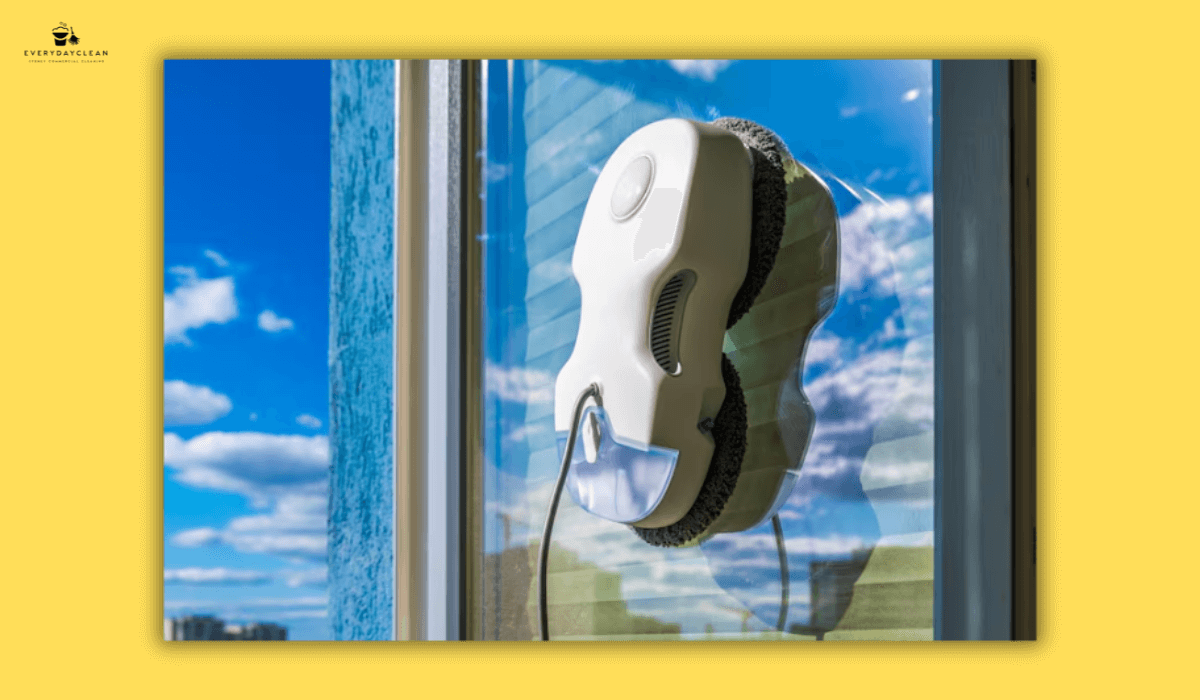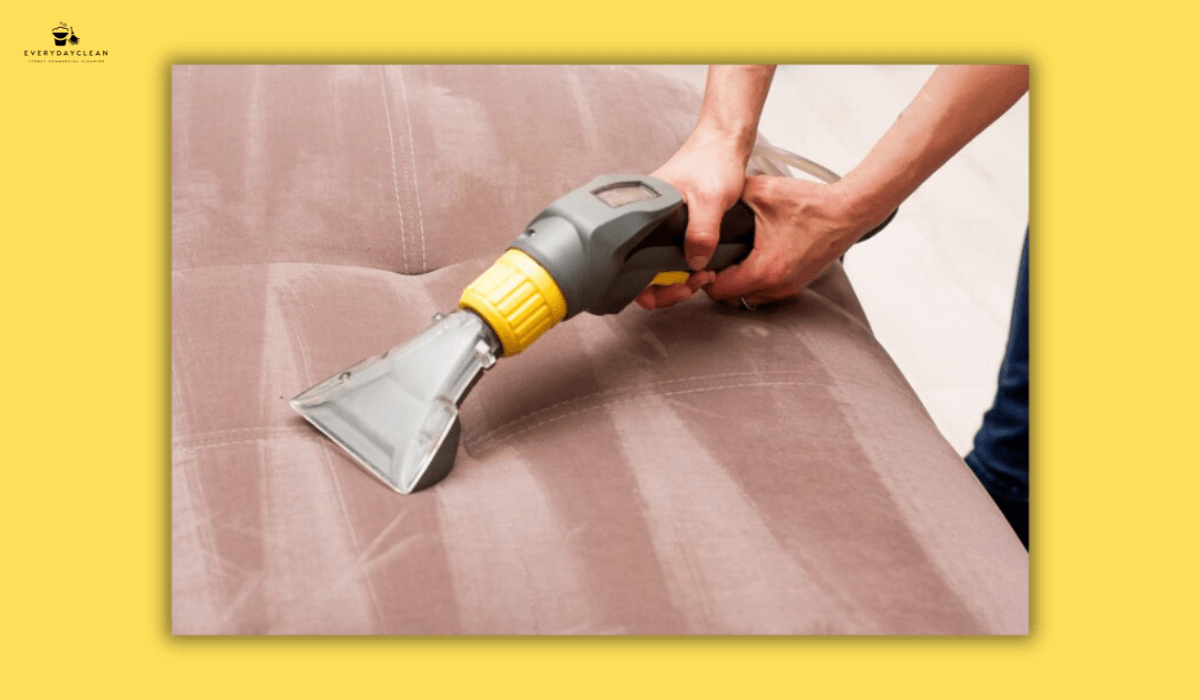9 Best Devices to Clean Windows from the Inside
Devices to clean windows from the inside query centre on how to reach exterior glass safely and effectively without leaning outside, something essential for apartments, high-rise units and multi-storey homes. The right device must provide controlled contact with the glass, distribute moisture evenly and remove dust, fingerprints, pollen and traffic film from panels that cannot be accessed by hand. These tools make it possible to clean outside windows while standing indoors, reducing risk while delivering clear, streak-free results.
Before moving into the checklist, it helps to understand that exterior window cleaning requires stability, reach and consistent pressure. Devices designed for inside-only use allow the glass to be cleaned thoroughly without ladders or unsafe body positioning. Everyday Clean shares tips for safe and effective window cleaning solutions. The nine carefully selected options below reflect the tools people rely on most for maintaining hard-to-reach windows in Australian homes.
9 Best Devices to Clean Windows from the side
Here is the primary content block. Each device is explained using a cleaning-focused perspective, prioritising performance, streak-prevention, and safety.
1. Magnetic Window Cleaner (Most Common Apartment Device)
A magnetic window cleaner uses two connected pads—one inside and one outside—to scrub and squeegee both sides of the glass at once. It is the most widely used device for apartments because users can clean exterior panes while staying completely indoors. Strong magnets keep the pads aligned through the glass, allowing dirt, grime, water spots and traffic residue to be removed in smooth, controlled strokes. Higher-end versions include adjustable magnet strength to match single- or double-glazed windows, microfibre pads for deep cleaning, and a safety tether to prevent falls. When used with a streak-free solution, this device provides reliable results even on tall, narrow windows.
2. Robotic Window Cleaner (Best Hands-Free Option)
Robotic window cleaners attach to the glass using suction and move in programmed paths to wash and wipe automatically. They are especially effective for large window panels where manual reach is limited. These devices distribute cleaning solution evenly and use rotating or oscillating microfibre pads to break down grime. Edge-detection sensors help the robot navigate frames without slipping, while backup batteries and safety ropes reduce fall risks. This device is ideal for homes where windows are tall, fixed, or frequently exposed to dust, sea air or pollution. The hands-free nature makes it a strong accessibility option for users who cannot stretch, lean or climb.
3. U-Shaped Window Cleaning Pole (Best for Non-Opening Windows)
A U-shaped cleaning pole allows both sides of a window to be cleaned simultaneously. One arm of the U holds a scrubber and the other a squeegee. As the user moves the handle from inside, the two arms glide across opposite sides of the glass. This ensures that exterior panes receive full coverage even when windows cannot be opened wide enough to reach outside. The system is simple, budget-friendly and ideal for routine maintenance. When paired with a microfibre sleeve soaked in a diluted detergent solution, it removes dust, grime and streak-forming residue effectively.

4. Telescopic Squeegee with Pivot Head (Most Reliable Manual Tool)
A telescopic squeegee offers extended reach, allowing exterior glass to be cleaned from balconies, verandahs or safe indoor positions. The pivoting head ensures the blade stays flat against the window, reducing streaks and improving water removal. When used with a detachable microfibre washer, this device mimics professional window-cleaning technique: scrub first, then squeegee in overlapping strokes. It works particularly well for sliding doors, full-height windows and mid-level exterior glass that is difficult to reach by hand.
5. Indoor–Outdoor Dual Pad System (Best for Controlled Contact)
Some window cleaning kits use paired pads connected by a frame rather than free magnets. The inside pad guides the outside pad using a stabilising bar, providing firm and predictable contact with the glass. This system is suited for situations where magnets may slip or where users prefer a more controlled glide. The pads often come pre-treated or designed to be used with diluted detergent solutions.
These systems excel at removing dried rain marks, dust film and mild grime without needing high-tech motors.
6. Budget Magnetic Window Cleaner (Entry-Level Alternative)
Budget magnets offer a low-cost way to clean outside glass from inside. While not as strong or smooth as premium versions, they are effective for average-thickness glass and small apartment windows. Users should test the magnet strength starting at the bottom of the window and always attach the safety rope. These cleaners work best when paired with microfibre pads and a mild detergent mixture to avoid streaking.
7. Long-Pole Squeegee for Second-Storey Glass (Best Reach from Safe Spots)
A long-pole squeegee allows windows above balconies or verandahs to be cleaned safely without leaning outwards. By adjusting the pole angle, the user can maintain flat contact for streak-free results. This device is widely used by professional cleaners for mid-level exterior glass. It is especially effective when paired with a pure-water system or a detergent rinse for breaking down mineral deposits, bird droppings and dust buildup.
8. Robot Cleaner for Users with Limited Mobility (Accessibility-Focused Choice)
A mobility-friendly robotic cleaner reduces the need for overhead reaching and repetitive arm movements. These models emphasise a simple setup—large buttons, clear indicators and intuitive start/stop functions. Once active, the robot handles all scrubbing, wiping and drying motions. This device is ideal for older adults, people with physical limitations or anyone who cannot safely climb or extend. It ensures the exterior glass remains clean year-round with minimal strain.
9. DIY Magnetic-Plus-Pole Hybrid (Creative Budget Solution)
Some households combine a basic magnetic cleaner with a short pole or extension handle for extra reach. This DIY approach is often shared on cleaning forums for handling tall, narrow windows. While more makeshift than commercial options, it increases control and reduces the need to lean out of the frame. The key is ensuring the magnet suits the glass thickness and that the safety rope remains attached. For more specialised options, check out our
window cleaning services to maintain both residential and commercial glass safely.

How to Choose a Device to Clean Windows from the inside
Before selecting a device, it helps to assess window style, glass thickness and height. Non-opening or tilt-windows benefit from magnetic or U-shaped systems. Double-glazed windows require an adjustable magnet strength to avoid slipping. Tall glass panels often justify a robotic cleaner, while balcony-accessible windows pair well with telescopic squeegees. Frequent maintenance favours robots or premium magnets, whereas occasional cleans may only require a budget-friendly tool. Matching the device to the cleaning challenge is the simplest way to achieve streak-free results safely.
8 Steps to Use a Device to Clean Windows from the Inside
A clear method ensures consistent cleaning results and reduces streaking: Remove dust with a dry microfibre cloth to prevent dragging grit across the glass. For additional tips on cleaning hard-to-reach glass, see our window cleaning tips.
- Remove dust with a dry microfibre cloth to prevent dragging grit across the glass.
- Prepare a streak-free cleaning solution or pure water.
- Attach pads, magnets or squeegee heads securely.
- Test the device on a low, safe section of the window.
- Begin at the top of the glass and work downward in overlapping motions.
- Clean edges and corners carefully, as these areas trap grime.
- Inspect the surface for streaks and re-wipe any patches with a dry cloth.
- Rinse pads or cloths after use to prevent dirt buildup and odour.

FAQs About Devices to Clean Windows from The Inside
Before we wrap up, here are some of the most common questions people ask about using devices to clean windows from the inside, so you can clean more confidently and avoid common mistakes.
How do magnetic window cleaners work?
Magnetic window cleaners use two pads—one inside, one outside—held together by magnetic force. When the inside pad moves, the outer pad moves in the same motion, allowing both sides of the glass to be cleaned simultaneously. The microfibre pads scrub dirt, and the squeegee edge removes moisture. Their performance depends heavily on magnet strength and glass thickness: if the magnet is too weak, the pads will disengage; if too strong, movement becomes difficult. Proper use requires attaching a safety rope, testing the magnet grip on low sections first and applying consistent cleaning pressure. When matched correctly, magnetic cleaners eliminate the need to lean outside the window while still producing near-professional clarity.
Are magnetic window cleaners effective on double-glazed windows?
Magnetic cleaners can work on double-glazed windows, but only if the magnets are strong enough to maintain contact through the thicker panels. Standard magnets may slip or fail to follow the inner pad on double glazing, especially on windows with tinting or laminated layers. Higher-end magnetic cleaners offer adjustable magnet strength or interchangeable plates designed specifically for double-glazed units. For extremely thick or coated glass, a robotic cleaner or U-shaped pole may provide better stability. The safest approach is to check the manufacturer’s maximum supported thickness and test the magnet on a low corner before cleaning the full pane.
Do window cleaning robots fall?
Modern window cleaning robots include multiple fail-safe features, but falls can occur if used incorrectly. Suction motors keep the robot attached to the glass, while backup batteries provide temporary suction if power is interrupted. Safety ropes must be attached to a secure point to prevent drops. Falls generally happen when users skip the safety tether, start the robot on an uneven frame edge, or apply it to surfaces with defects that weaken suction. When operated according to instructions and tested on a reachable panel first, the risk of a fall is extremely low. Robots remain one of the safest options for tall, fixed exterior windows.
What is the best window cleaning device for someone with limited mobility?
For users with limited mobility, the safest and most practical device is a robotic window cleaner. It requires minimal lifting, gripping or stretching. The user only needs to attach the robot at chest height, start the cleaning process and monitor its progress. Robots handle all scrubbing, wiping and drying motions. For smaller panes, a lightweight magnetic cleaner with ergonomic grips may also be effective. The best choice depends on the user’s ability to maintain steady positioning, attach the device safely and supervise the cleaning process without discomfort.
What is a U-shaped window cleaning pole?
A U-shaped pole is a manual cleaning tool designed for windows that do not open wide enough to reach the exterior surface. The tool’s frame holds a scrubber on one side and a squeegee on the other, allowing both sides of the glass to be cleaned by guiding the pole from inside. It is a low-tech but highly effective solution for tilt-and-turn or fixed windows. Because the cleaning pads move in unison, the system provides predictable contact and reduces streaking. It is a preferred choice for simple maintenance without magnets or motors.
How much do professional high-rise window cleaners charge compared to buying a device?
Professional high-rise window cleaning often costs as much as a mid-range magnetic cleaner or entry-level robot for a single visit. Prices depend on height, access difficulty, safety requirements and the number of panes. Buying a device provides long-term value for routine maintenance, especially for apartments with multiple glass panels. However, professional services remain essential for extremely tall buildings, badly stained windows or situations requiring specialised safety equipment. Many households benefit from combining both approaches—professional deep cleans a few times a year with at-home devices used for maintenance between visits.
Final Thoughts
A device to clean windows from inside gives households a safe and effective way to maintain exterior glass without ladders, risk or strain. Magnetic cleaners offer precision, robots deliver automation, and telescopic tools provide reach—each solving a different cleaning challenge. Choosing a tool that matches window style, height, and frequency of cleaning ensures consistently clear, streak-free results. With the right device, even high or fixed windows can be maintained confidently from indoors.
About the Author
At Everyday Clean, we believe a clean space should feel good, not complicated. With over 20 years of experience, our team has learned what truly matters to customers: reliability, honesty, and results you can see. We share practical cleaning tips and real-world advice to help you care for your home or workplace with confidence. Every guide we write comes from everyday experience—what works, what doesn’t, and how to make cleaning simpler for everyone.
You might also like
Blog



